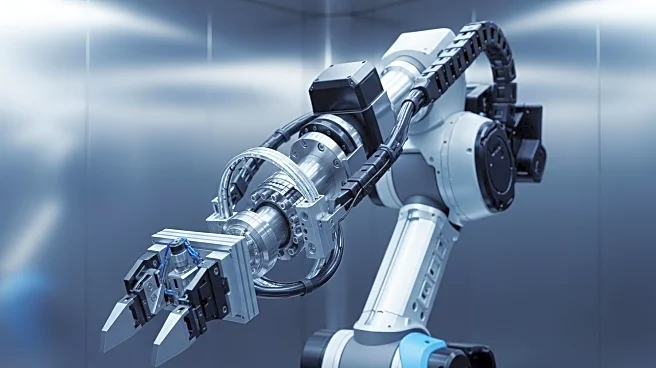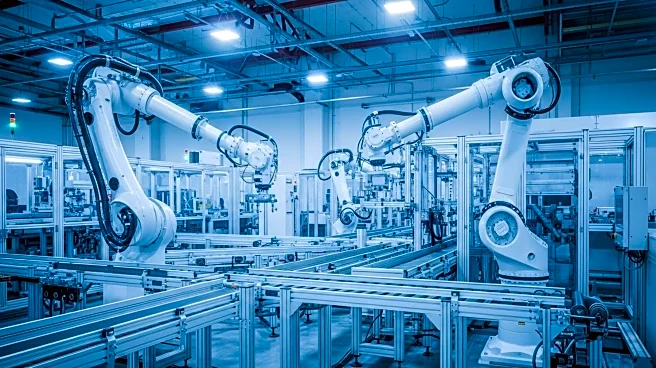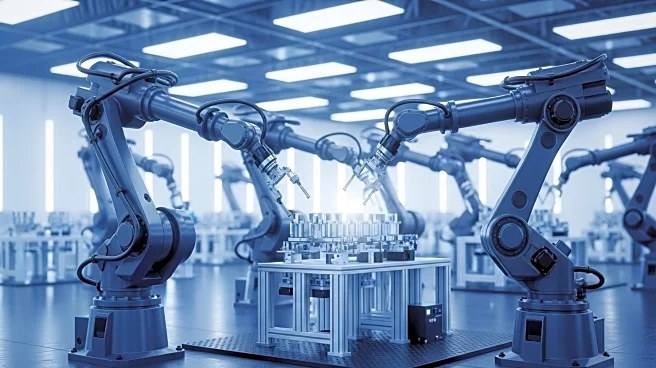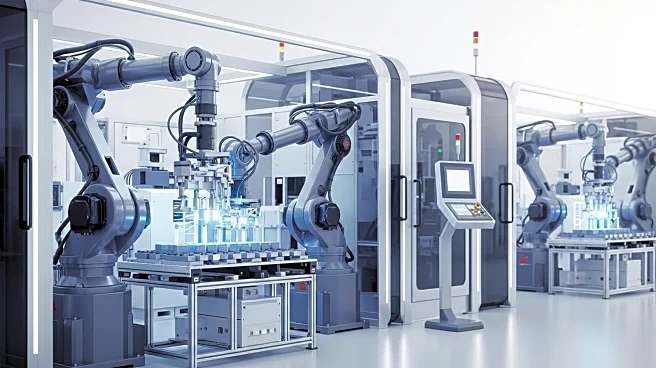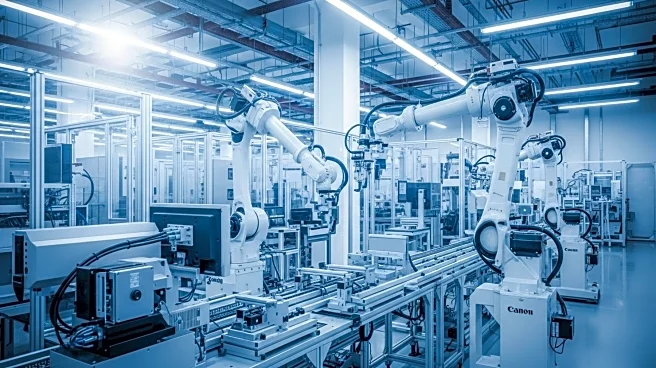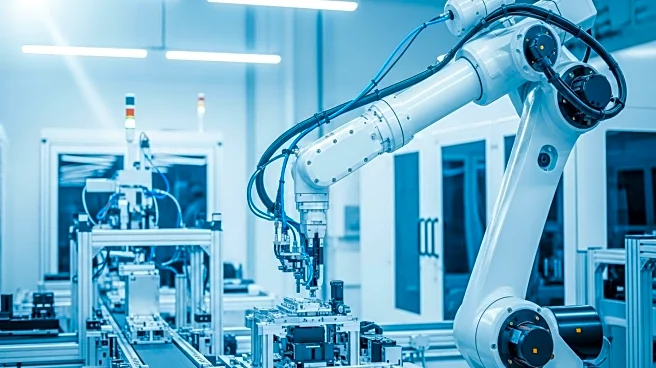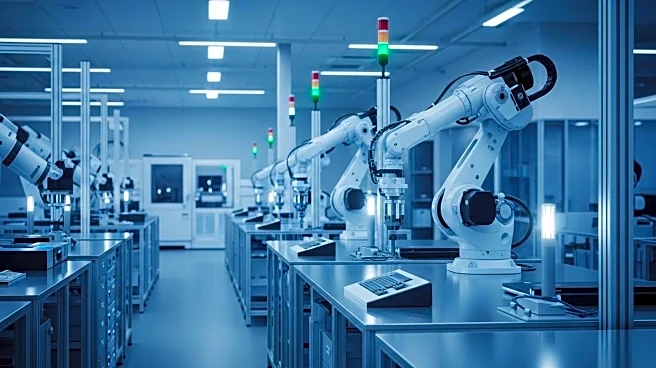What's Happening?
The United States is being encouraged to adopt a robotics strategy similar to China's to enhance its manufacturing sector and address labor shortages. The U.S. faces a significant challenge with an estimated need for 3.8 million additional manufacturing workers by 2033, with a potential shortfall of 2.1 million positions. This gap could result in an opportunity cost of approximately $1 trillion annually. Robotics and automation are seen as critical to overcoming these challenges, with the potential to boost productivity and efficiency. The U.S. has seen substantial private investment in robotics, with $6.1 billion in venture capital directed towards robotics startups last year. However, a national strategy is deemed necessary to fully capitalize on these technological advancements.
Why It's Important?
The adoption of a comprehensive robotics strategy in the U.S. could significantly impact the economy and the environment. By increasing automation, the U.S. could enhance its competitiveness in global manufacturing, reduce labor shortages, and drive economic growth. Additionally, robotics can play a crucial role in decarbonization efforts, aiding in the reduction of CO2 emissions and supporting climate change mitigation strategies. Sectors such as solar energy, electric vehicles, and battery manufacturing could see substantial benefits from increased automation, leading to more sustainable industrial practices. The U.S. has the potential to become a leader in the emerging climate economy by integrating robotics into its industrial and environmental strategies.
What's Next?
To achieve these goals, the U.S. needs to develop a unified national strategy for robotics and automation. This strategy should focus on fostering innovation, supporting startups, and integrating robotics into key industries. Policymakers and industry leaders are expected to collaborate on creating incentives and frameworks that encourage the adoption of advanced technologies. The upcoming RoboBusiness 2025 conference in Santa Clara, California, will feature discussions on closing the robotics gap with China, highlighting the importance of strategic planning in this area. The U.S. must act swiftly to leverage its innovation capacity and entrepreneurial spirit to lead in the global robotics and climate economy.
Beyond the Headlines
The push for a robotics strategy in the U.S. also raises ethical and social considerations, such as the potential displacement of workers and the need for retraining programs. As automation increases, there will be a growing demand for skilled workers who can manage and maintain advanced robotic systems. Additionally, the integration of robotics into various sectors could lead to shifts in labor dynamics and require new regulatory frameworks to ensure fair labor practices and safety standards. The long-term success of a robotics strategy will depend on balancing technological advancement with social responsibility and workforce development.

